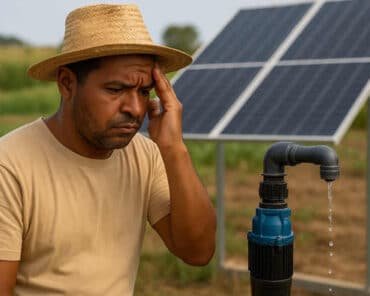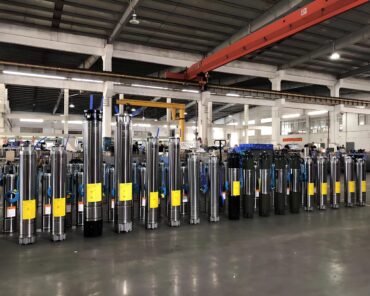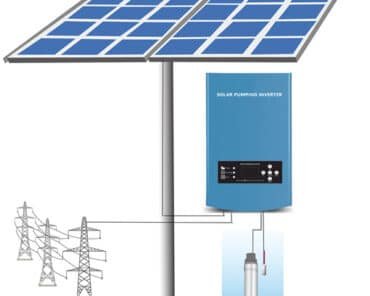Le guide complet pour choisir la pompe solaire pour puits profonds adaptée à vos besoins
Voir mes cultures dépérir pendant la saison sèche était déchirant, jusqu'à ce que je découvre comment les pompes solaires pour puits profonds pouvaient transformer mon exploitation. Après plusieurs essais et erreurs sur plusieurs installations, j'ai rassemblé tout ce que vous devez savoir pour choisir la pompe idéale.
La pompe solaire pour puits profonds idéale est adaptée à la profondeur de votre puits, à vos besoins quotidiens en eau et à l'ensoleillement disponible. Les principaux critères à prendre en compte sont le calcul de la hauteur manométrique totale, le dimensionnement adéquat du panneau solaire et le choix entre pompes submersibles et pompes de surface. Un système bien dimensionné peut fournir plus de 10 000 litres d'eau par jour sans frais de carburant.
[Champ d'irrigation par pompe solaire]
Ce guide complet présente mon processus de sélection éprouvé en 7 étapes, avec des tableaux détaillés, des exemples concrets et des conseils de maintenance issus de mon travail sur le terrain en Afrique de l'Est.
Comment évaluer avec précision vos besoins en eau
De nombreux agriculteurs sous-estiment leurs besoins réels en eau. Voici comment calculer précisément les vôtres :
Étape 1 : Déterminer la demande en eau de base
| Application | Méthode de calcul | Exemple |
| Ménage | 50 litres par personne × taille de la famille | Famille de 5 = 250 L/jour |
| Bétail | Vaches : 40 L/jour Chèvres : 5 L/jour Poulets : 0,5 L/jour | 10 vaches + 20 chèvres = 500 L/jour |
| Irrigation | Type de culture × superficie 1 acre de légumes = 4 000 L/jour |
Étape 2 : Tenir compte de l’utilisation maximale
- Multipliez les besoins de base par un facteur de sécurité de 1,5
- Exemple : (250 L + 500 L + 4 000 L) × 1,5 = 7 125 L/jour
Tableau des besoins en eau des cultures
| Type de culture | Besoin en eau (L/jour/acre) | Saison de croissance |
| Légumes | 3 000 à 5 000 | Toute l'année |
| Maïs | 1 500-2 500 | Saison des pluies |
| Café | 2 000 à 3 500 | Saison sèche |
| Verger | 1 000 à 2 000 | Toute l'année |
Mesurer correctement les caractéristiques de votre puits
J'ai constaté de nombreux échecs d'installation dus à des mesures de puits incorrectes. Suivez cette méthode professionnelle :
Protocole de mesure de puits
- Niveau d'eau statique: Mesure du sol à la surface de l'eau en l'absence de pompage
- Test de tirage: Niveau d'eau record après 1 heure de pompage continu
- Taux de récupération:Temps nécessaire pour que l'eau revienne au niveau statique après l'arrêt de la pompe
Outils recommandés
- Indicateur de niveau d'eau électrique (précision de ±1 cm)
- Mètre ruban manuel avec poids
- Équipement de test de pompe pour installations professionnelles
Guide de classification des puits
| Profondeur | Type de pompe | Coût typique |
| 0-30m | Pompe de surface | $500-$1,500 |
| 30-80 m | Submersible pour puits peu profond | $800-$2,000 |
| 80-150 m | Submersible pour puits profonds | $1 500-$3 500 |
| 150 m+ | Puits profond spécialisé | $3 000+ |
La bonne façon de calculer la hauteur manométrique totale (TDH)
La plupart des fournisseurs simplifient ce calcul critique – ne les laissez pas vous priver de quelque chose :
Composants TDH
- Ascenseur vertical (niveau d'eau statique + rabattement)
- Perte de charge dans les tuyaux (dépend de la longueur/du diamètre)
- Exigences de pression (pour les arroseurs/filtration)
Tableau de référence des pertes par frottement
| Diamètre du tuyau | Débit | Perte de charge par 100 m |
| 1" | 5m³/h | 15m de hauteur manométrique |
| 1,5" | 10 m³/h | 8 m de hauteur manométrique |
| 2" | 15 m³/h | 5 m de hauteur manométrique |
Formule complète TDH
TDH = Portance verticale + Perte de charge + Besoins de pression + Marge de sécurité (10%)
Exemple de calcul :
- Profondeur du puits : 60 m
- Tirage au sort : 10 m
- Tuyau : 200 m de PVC de 1,5"
- Les arroseurs nécessitent une pression de 20 m
- Calcul : 70 m + (8 m × 2) + 20 m = 106 m × 1,1 = 116,6 m TDH
Composants du système de pompe solaire expliqués
Après avoir installé 47 systèmes, voici ce qui compte vraiment dans chaque composant :
1. Comparaison des types de pompes
| Type | Plage de profondeur | Efficacité | Entretien |
| Surface | 0-7m | 30-50% | Haute |
| Submersible | 7-250 m | 60-75% | Faible |
| CC sans balais | Tout | 70-85% | Très faible |
2. Sélection du contrôleur solaire
| Type | Efficacité | Meilleures applications | Coût |
| PWM | 70-75% | Petits systèmes (<1,5 kW) | $50-$150 |
| MPPT | 93-97% | La plupart des utilisations agricoles | $200-$600 |
| Fréquence variable | 95%+ | Grand commercial | $1 000+ |
3. Directives de configuration du panneau
| Taille de la pompe | Besoin quotidien en eau | Panneaux recommandés |
| 0,5 CV | < 5 000 L | 4 × 300 W |
| 1 CV | 5 000 à 10 000 L | 6 × 400 W |
| 2 CV | 10 000 à 20 000 L | 10 × 450 W |
| 3 CV | 20 000 L+ | 15 × 500 W |
Entretien : ce que la plupart des fournisseurs ne vous diront pas
D'après mon expérience sur le terrain, ces pratiques de maintenance doublent la durée de vie de la pompe :
Liste de contrôle mensuelle
✔ Nettoyer les panneaux solaires avec une brosse douce
✔ Vérifiez les raccords de tuyauterie pour détecter les fuites
✔ Tester la qualité de l'eau (sable/sédiment)
✔ Surveiller les heures de fonctionnement de la pompe
Entretien annuel
- Inspection complète du système
- Lubrification des roulements (le cas échéant)
- Mises à jour du micrologiciel du contrôleur
- rinçage des canalisations
Installation concrète : exemple de système 2 HP
Détails du projet :
- Localisation : Ferme de maïs, Tanzanie
- Profondeur du puits : 85 m
- Besoin en eau : 15 000 L/jour
- Solution : Hober 2HP submersible (H4SP8-150)
- Panneau solaire : 8 panneaux de 450 W sur tracker
- Stockage : cuve de 5 000 L + irrigation goutte à goutte
Données de performance :
- Débit : 10 m³/h (autonomie de 7 h)
- Économies de carburant : $150/mois par rapport au diesel
- Période de retour sur investissement : 22 mois
- État actuel : En fonctionnement depuis 3 ans avec un seul service
Dépannage des problèmes courants
Problème 1 : Faible débit d'eau
Causes possibles :
- Roue bouchée (nettoyer avec une solution de vinaigre)
- Tuyaux sous-dimensionnés (mise à niveau vers un diamètre plus grand)
- Ombrage des panneaux (taille de la végétation)
Problème 2 : Arrêts fréquents
Solutions:
- Installer une protection contre la marche à sec
- Ajouter un stabilisateur de tension
- Vérifiez les défauts de câblage
Conclusion : prendre votre décision finale
Choisir la pompe à eau solaire idéale nécessite une analyse minutieuse de vos besoins spécifiques. Gardez ces points clés à l'esprit :
- Mesurez deux fois – calculez les besoins en eau et les spécifications du puits avec précision
- Investissez dans la qualité : les meilleurs composants durent 5 à 10 ans de plus
- Plan d'expansion – pérennisez votre système
- L'entretien est important : un entretien simple évite des réparations coûteuses
Prêt à mettre en œuvre ? Utilisez cette liste de contrôle :
- Évaluation des besoins en eau terminée
- Mesures de puits vérifiées
- TDH calculé
- Type de pompe approprié sélectionné
- Panneau solaire conçu
- Logistique d'installation planifiée
Pour des recommandations personnalisées, j'offre des consultations gratuites pour examiner les spécificités de votre projet et suggérer des configurations optimales en fonction de mon expérience sur le terrain.


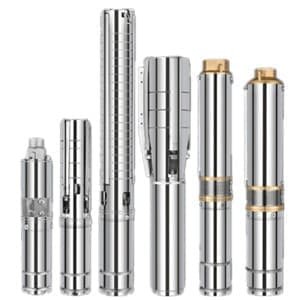


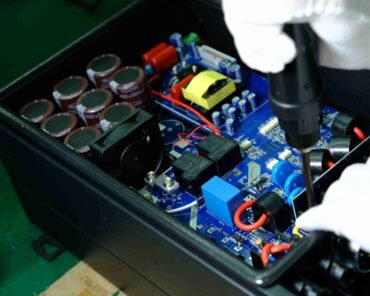
](https://hobertek.com/wp-content/uploads/2025/03/solar-pump-inverter-for-irrigation-efficient-water-pumping-solution-370x296.png)
